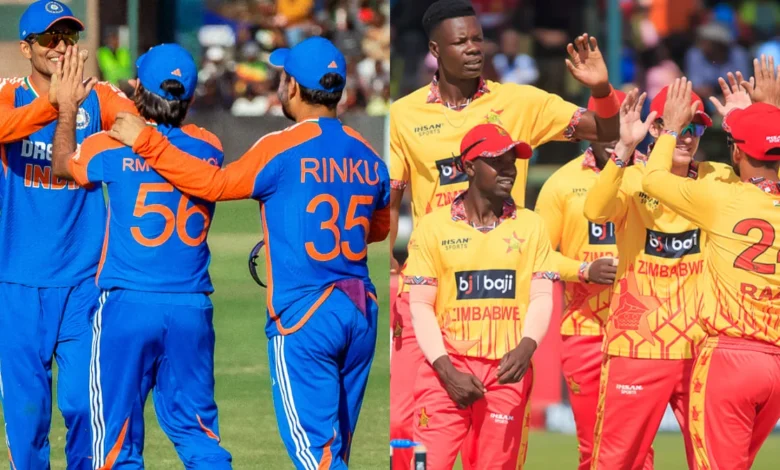Understanding the Cricket Team Match Scorecard: A Complete Guide

Cricket fans and players alike know that a cricket team match scorecard is like a roadmap for the game. It’s a snapshot of every ball bowled, every run scored, and every wicket taken. Whether you’re a seasoned cricket enthusiast or a newcomer to the sport, understanding a scorecard can help you follow the game more closely and enjoy it on a whole new level. This article will take you through everything you need to know about a cricket team match scorecard, helping you decode the numbers and symbols that make up the story of the game.
In this guide, we’ll explore what a cricket scorecard is, why it’s important, and how to read it like a pro. Let’s get started!
What Is a Cricket Team Match Scorecard?

A cricket team match scorecard is a detailed record of everything that happens in a cricket match. It includes information about each player’s performance, the team’s total score, and other important details of the game. The scorecard provides insights into individual and team statistics, showing fans and players alike how the match unfolded.
Typically, a cricket scorecard records data such as:
- Runs scored by each player
- Balls faced by each player
- Wickets taken by each bowler
- Extras given by the fielding team
- Overall team scores and wickets
Each scorecard is unique to the match it represents, painting a picture of how each player and team performed.
Why Is the Cricket Team Match Scorecard Important?
The cricket team match scorecard serves as an official record of the match, capturing the achievements of each player and the overall performance of both teams. Here’s why it matters:
- Performance Tracking: Scorecards help players and coaches analyze performances, identifying strengths and weaknesses.
- Historic Record: For fans, the scorecard is a memento, capturing the highlights and key moments of the game.
- Strategic Analysis: Teams use scorecards to develop strategies based on past matches.
- Fan Engagement: Fans rely on scorecards to stay updated and analyze the match in real-time.
Understanding the scorecard can deepen your appreciation of cricket and allow you to follow the action closely, even if you can’t watch the match live.
Components of a Cricket Team Match Scorecard
A cricket team match scorecard may seem overwhelming at first, but it’s easy to read once you know what each part means. Here’s a breakdown of the main components you’ll find on a scorecard.
Team Scores
The team score gives the total number of runs scored by each team and the number of wickets lost. This is often displayed at the top of the scorecard, and it’s the quickest way to see how the teams are performing.
Individual Player Details
Each player’s performance is listed under their respective team. Here’s what’s usually included:
- Batsman’s Runs: The runs scored by each batsman are listed next to their names.
- Balls Faced: The number of balls faced by each batsman is also recorded.
- Strike Rate: Calculated by dividing runs by balls faced, then multiplied by 100. It shows how quickly a batsman scores.
Wickets and Bowling Figures
The bowling section of the scorecard includes details about each bowler’s performance, such as:
- Wickets Taken: The number of wickets a bowler has taken.
- Runs Conceded: The total runs given away by the bowler.
- Overs Bowled: The number of overs bowled by each player.
Extras
Extras are runs awarded to the batting team for certain mistakes by the bowling or fielding team. They can be:
- Wides: A ball bowled too wide for the batsman to reach.
- No Balls: A ball bowled in a way that breaks the rules.
- Byes: Runs scored when the batsman misses the ball, but it’s not stopped by the wicketkeeper.
- Leg Byes: Runs scored when the ball hits the batsman’s body or gear but not the bat.
Fall of Wickets
The fall of the wickets section indicates when each wicket was taken, including the team score at that point. This part shows the match’s turning points and helps analyze the pressure moments.
Reading a Cricket Team Match Scorecard: A Step-by-Step Guide
Now that we know what each part of a scorecard represents, let’s go through how to read it from top to bottom. Here’s a simple guide:
- Look at the Team Scores: Start by checking the total score and number of wickets lost by each team.
- Examine Individual Batting Scores: Check each batsman’s runs, balls faced, and strike rate.
- Review Bowling Figures: Look at the overs bowled, runs conceded, and wickets taken by each bowler.
- Check the Extras: Note the extra runs contributed to the batting team’s total score.
- Follow the Fall of Wickets: Observe when each wicket fell and the score at that moment to understand key moments in the game.
Let’s break down these elements in a simple table:
ComponentWhat It Shows
Team Scores Total runs scored, wickets lost
Individual Batting Runs, balls faced, strike rate
Bowling Performance Overs bowled, runs conceded, wickets
Extras Extra runs from no balls, wides, etc.
Fall of Wickets Key moments where wickets fell
Examples of Common Cricket Team Match Scorecards
To understand better, let’s look at a sample of a typical scorecard layout:
Example Scorecard Layout
Batsman NameRunsBalls FacedStrike Rate
Player A 45 38 118.4
Player B 28 32 87.5
Player C 10 15 66.7
Bowler NameOversRuns ConcededWickets Taken
Bowler X 4.0 25 2
Bowler Y 3.0 18 1
The above layout gives a glimpse of how a cricket team match scorecard captures player performance on both sides.
Different Formats of Cricket and Their Scorecards
Cricket is played in different formats, and each format has a unique style of scorecard. Let’s explore the main formats and their scorecard structures.
Test Matches
- Scorecard Length: Typically covers innings, as each team bats twice.
- Details Recorded: Comprehensive records of each player’s innings, often spanning multiple days.
- Key Focus: Individual scores and partnerships are especially important in Test matches.
One Day Internationals (ODIs)
- Scorecard Format: Reflects the 50-over limit for each team.
- Details: Strike rates and overall team scores are crucial in ODIs, as teams have a limited number of overs.
- Strategy Indicator: The fall of wickets is a major focus, as teams balance aggressive play with maintaining wickets.
T20 Matches
- Scorecard Structure: Condensed format, showing performance over 20 overs per side.
- Key Highlights: Batting strike rate and bowling economy rate are key for T20 scorecards.
- Fan Appeal: T20 scorecards often emphasize boundaries and wicket-taking moments.
Top Moments Captured in a Cricket Team Match Scorecard
Every cricket scorecard captures memorable moments, from big sixes to critical wickets. Here are some thrilling instances that scorecards immortalize:
- Milestones: A player’s 50, 100, or a bowler’s five-wicket haul is always highlighted.
- Partnerships: Crucial partnerships that stabilize the team’s score are recorded.
- Dramatic Finishes: Last-over thrillers and super overs are especially exciting in T20s and ODIs.
Cricket Team Match Scorecard: Digital vs. Printed
Today, digital scorecards are the norm. Let’s look at some advantages of digital scorecards:
- Instant Updates: Fans get real-time scores and statistics.
- Enhanced Graphics: Digital scorecards offer graphs, player stats, and comparisons.
- Accessibility: Available online, fans can follow live matches from anywhere.
Printed Scorecards
Printed scorecards, often sold at stadiums, serve as a keepsake for fans. These may lack real-time updates but provide a physical record for memories.
How to Interpret Bowling Economy and Strike Rates on a Scorecard
When reviewing a bowler’s performance, understanding the economy and strike rates is essential. Here’s what they mean:
- Economy Rate: Shows how many runs a bowler gives away per over. Calculated by dividing runs conceded by overs bowled.
- Strike Rate: Indicates how many balls it takes a bowler to take a wicket. Calculated by dividing the total balls bowled by wickets taken.
Conclusion: Appreciating the Cricket Team Match Scorecard
Understanding a cricket team match scorecard enriches the experience of following the game. A scorecard is more than just numbers—it’s a detailed summary of every high and low, a story of triumphs and challenges. Whether you’re tracking your favorite team or analyzing players, the scorecard keeps you close to the action.
Next time you’re watching a match, keep the scorecard close by and dive into the stats. You’ll find yourself not only following the game but truly understanding it. So grab your scorecard, enjoy the thrill of every run, and savor each wicket.





